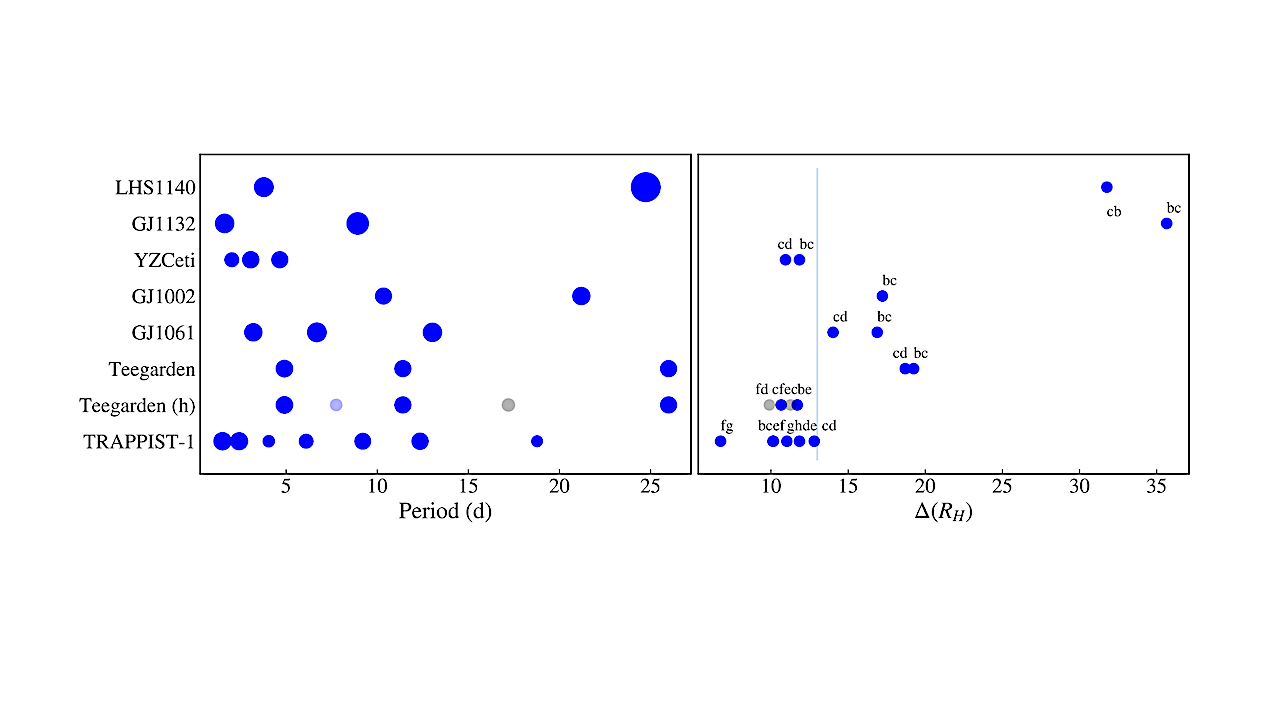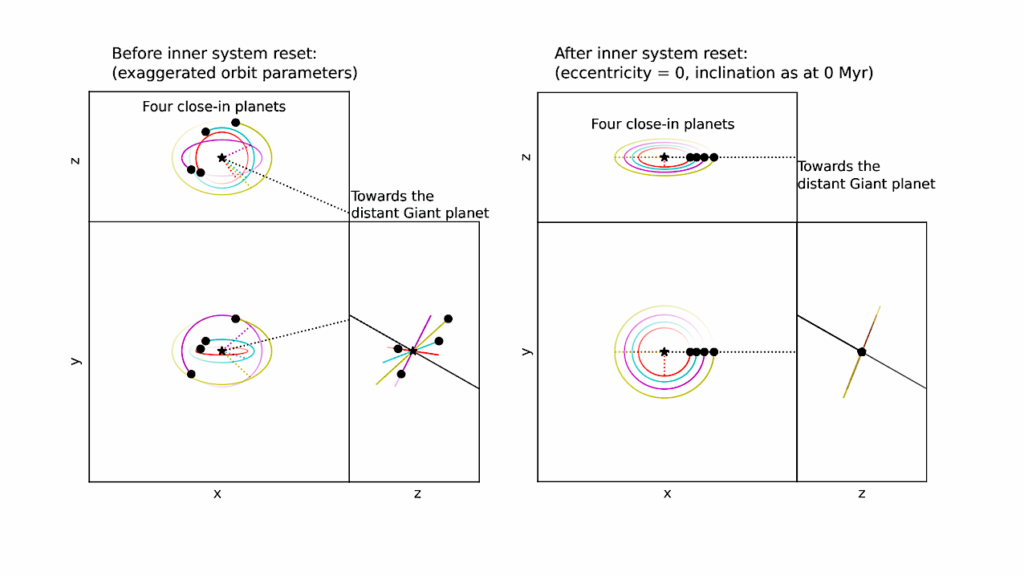Teegarden’s Star Revisited: A Nearby Planetary System With At Least Three Planets

The two known planets in the planetary system of Teegarden’s Star are among the most Earth-like exoplanets currently known. Revisiting this nearby planetary system with two planets in the habitable zone aims at a more complete census of planets around very low-mass stars.
A significant number of new radial velocity measurements from CARMENES, ESPRESSO, MAROON-X, and HPF, as well as photometry from TESS motivated a deeper search for additional planets. We confirm and refine the orbital parameters of the two know planets Teegarden’s Star b and c. We also report the detection of a third planet d with an orbital period of 26.13+-0.04 d and a minimum mass of 0.82+-0.17 M_Earth.
A signal at 96 d is attributed to the stellar rotation period. The interpretation of a signal at 172 d remains open. The TESS data exclude transiting short-period planets down to about half an Earth radius. We compare the planetary system architecture of very low-mass stars.
In the currently known configuration, the planetary system of Teegarden’s star is dynamically quite different from that of TRAPPIST-1, which is more compact, but dynamically similar to others such as GJ 1002.
S. Dreizler, R. Luque, I. Ribas, V. Koseleva, H. L. Ruh, E. Nagel, F. J. Pozuelos, M. Zechmeister, A. Reiners, J. A. Caballero, P. J. Amado, V. J. S. Béjar, J. L. Bean, M. Brady, C. Cifuentes, M. Gillon, A. P. Hatzes, Th. Henning, D. Kasper, D. Montes, J. C. Morales, C. A. Murray, E. Pallé, A. Quirrenbach, A. Seifahrt, A. Schweitzer, J. Stürmer, G. Stefánsson, J. I. Vico Linares
Comments: Astronomy & Astrophysics, accepted; 21 pages, 18 figures
Subjects: Earth and Planetary Astrophysics (astro-ph.EP); Solar and Stellar Astrophysics (astro-ph.SR)
Cite as: arXiv:2402.00923 [astro-ph.EP] (or arXiv:2402.00923v1 [astro-ph.EP] for this version)
Submission history
From: Stefan Dreizler
[v1] Thu, 1 Feb 2024 17:35:25 UTC (13,431 KB)
https://arxiv.org/abs/2402.00923
Astrobiology








